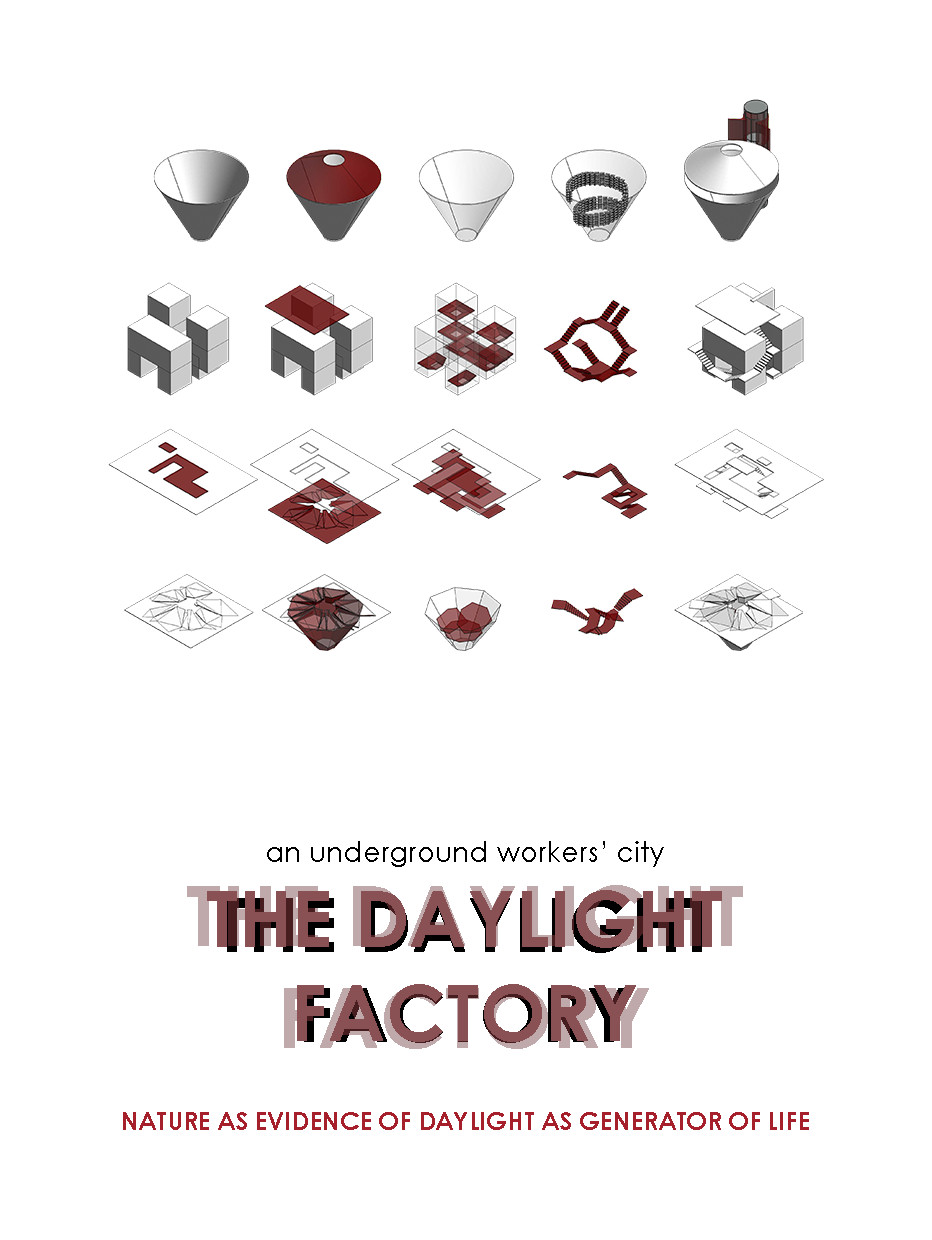The Daylight Factory

Category
Daylight in buildings - Region 2: Central and Eastern Europe and the Middle East.
Students
Cyril El Khoury
School
Holy Spirit University of Kaslik
Country
Lebanon
Download
Download ↓
Daylight is often taken for granted in a sense of familiarity or normality, as something one solely appreciates through its absence. Hence the importance of the double existence of daylight and shadow, and their confrontation to three essential characteristics of daylight: quality, quantity and duration; each of these components affecting the others.
Conditioning the quantity of daylight brings out different qualities, which can be achieved through framing and channeling, through filtering and concentration, or through restriction and contrast in order to create atmospheres, touch spirituality or even organize space. By means of this conditioning of daylight in space, minimal contribution of daylight generates an optimal impact, which can lead to the declaration of ‘Less could be More’ when it comes to daylight.
This may be valid in the Nabaa district, in suburban Beirut, Lebanon, a neighborhood which suffers from high urban and human density which limit the supply of daylight in the city. Hence the intention to exploit this restrained daylight input through minimal interventions based on an economic production, a production that is both anchored in the history of Nabaa and feasible only through daylight: agricultural production, horticulture. Nature thus materializes the evidence of daylight as the generator of life.
As with every type of production, horticulture produces waste. Hence the intention to integrate this production into a self-sufficient cycle where, in the principle of nature, the waste of one is the resource of the other. A cycle focused on production, recycling, upcycling and downcycling, and therefore hydroponics, composting, biodegradable packaging and biobased products. To guarantee the functioning of this cycle, each 4 functions would be connected by an underground network, which bypasses the footprint of the existing buildings, thereby creating an underground rhizome which completes the city without disturbing it.
The city being quite dense and urbanized, the interventions themselves could take place in quite restricted areas on the surface of the district, such as abandoned wastelands between the buildings, to restore the connection of the district with itself, by creating communal spaces and work opportunities within the neighborhood, as well as its connection with adjacent neighborhoods. As the city of Nabaa lacks open spaces and green spaces, these interventions would be implemented below the ground surface, ensuring a relatively empty space, reorganized into public space, to maintain the much-needed urban voids. These interventions would therefore follow the model of icebergs, where the surface is only evidence of a larger but hidden presence.
This underground action could in the future overflow towards the surface, and generate community reactions, which would apply the same systems to the ground, on the facades and on the roofs of the surrounding buildings, thus creating green hubs in the city, nature once again demonstrating daylight as a generator of life.
These underground typologies would take different forms which are influenced by both the spatial organization and daylight supply required for each function:– Agricultural production requires uniform spatial and climatic conditions, in the chimney process, hence the choice of the reversed cone where the light diffusion is uniform.– Composting requires varying light and climate conditions, and releases different gases and odors. Hence the stratification of isolated cells that help each other create the right composting conditions.– The manufacture of biodegradable packaging – from mycelium, for example – has several sub-functions that require various surfaces and quantities of daylight. Hence the alternative of space stratification coupled with different competing mirrors for a diffuse reflection of daylight.– The manufacture of biobased products and products from organic matter sometimes requires an extraction of matter. Hence the diamond shape which forms a reservoir for these materials, while uniformly or diffusely reflecting daylight.

































